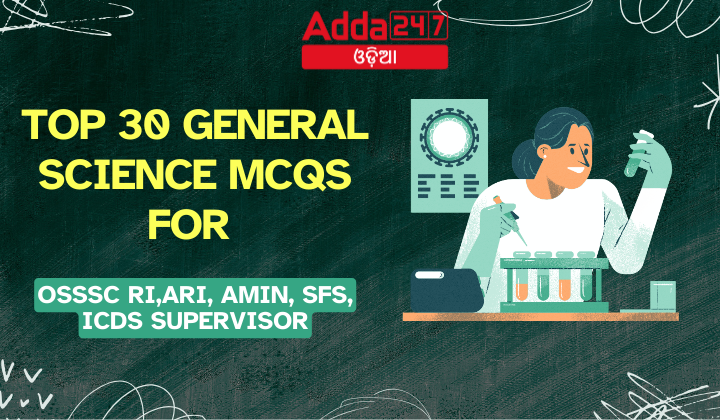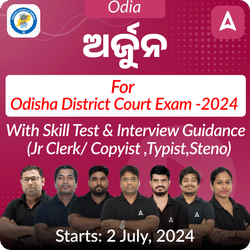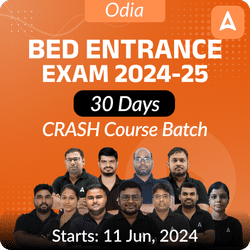General Studies is a crucial component of various competitive exams like OSSSC RI, ARI, Amin, SFS, and ICDS Supervisor. It encompasses a wide range of topics, from current affairs to history, geography, polity, and more. To excel in these exams, it’s essential to have a strong grasp of general knowledge. Here, we present a curated list of the top 30 Multiple Choice Questions (MCQs) that are commonly encountered in these exams, covering diverse subjects to help you prepare effectively.
Top 30 General Science MCQS For OSSSC RI,ARI, Amin, SFS, ICDS Supervisor
- What is the primary function of the plasma membrane in a cell?
A. Providing rigidity to the cell
B. Synthesizing proteins
C. Controlling the passage of materials in and out of the cell
D. Storing genetic information
Answer: C. Controlling the passage of materials in and out of the cell - Which of the following is not a component of the cell wall in plant cells?
A. Cellulose
B. Hemicelluloses
C. Pectin
D. Phospholipids
Answer: D. Phospholipids - What structure within the nucleus is responsible for the formation of ribosomes?
A. Chromatin
B. Nucleolus
C. Nuclear envelope
D. Endoplasmic reticulum
Answer: B. Nucleolus - Which type of endoplasmic reticulum is associated with the synthesis of proteins?
A. Smooth Endoplasmic Reticulum (SER)
B. Rough Endoplasmic Reticulum (RER)
C. Golgi apparatus
D. Lysosomes
Answer: B. Rough Endoplasmic Reticulum (RER) - What is the primary function of mitochondria in the cell?
A. Synthesizing proteins
B. Synthesizing lipids
C. Generating energy (ATP)
D. Storing genetic information
Answer: C. Generating energy (ATP) - Which organelle is known as the “suicidal bag” of the cell due to its role in digesting cellular waste and debris?
A. Ribosomes
B. Lysosomes
C. Peroxisomes
D. Vacuoles
Answer: B. Lysosomes - Which of the following structures is found only in plant cells and not in animal cells?
A. Centrosome
B. Mitochondria
C. Chloroplasts
D. Golgi apparatus
Answer: C. Chloroplasts - Which component of the cell is responsible for packaging and dispatching materials synthesized inside the cell?
A. Endoplasmic Reticulum
B. Ribosomes
C. Golgi apparatus
D. Mitochondria
Answer: C. Golgi apparatus - What are vacuoles primarily responsible for in plant cells?
A. Synthesizing proteins
B. Providing turgidity and rigidity
C. Storing genetic information
D. Generating energy (ATP)
Answer: B. Providing turgidity and rigidity - Which organelles are involved in detoxification processes within the cell?
A. Lysosomes
B. Peroxisomes
C. Ribosomes
D. Vacuoles
Answer: B. Peroxisomes - Which of the following is a characteristic feature of Kingdom Monera?
A) Multicellular organisms
B) Eukaryotic cells
C) Presence of a well-defined nucleus
D) Prokaryotic cells
Answer: D) Prokaryotic cells - What distinguishes Archaebacteria from Eubacteria?
A) Archaebacteria are eukaryotic
B) Archaebacteria live in extreme environments
C) Eubacteria have a well-defined nucleus
D) Eubacteria are autotrophs
Answer: B) Archaebacteria live in extreme environments - Which of the following is an example of an organism from Kingdom Protista?
A) Yeast
B) Mushroom
C) Amoeba
D) Penicillium
Answer: C) Amoeba - Kingdom Fungi includes organisms that:
A) Are photosynthetic
B) Have a cell wall made of chitin
C) Have a well-defined nucleus
D) Both B and C
Answer: D) Both B and C - Which kingdom includes multicellular green plants and advanced algae?
A) Monera
B) Protista
C) Fungi
D) Plantae
Answer: D) Plantae - Kingdom Animalia is characterized by organisms that:
A) Are autotrophic
B) Have a cell wall
C) Have limited growth
D) Are immobile
Answer: C) Have limited growth - Which group of organisms is known for using chemical energy sources like ammonia or methane for metabolic activities?
A) Eubacteria
B) Archaebacteria
C) Protista
D) Fungi
Answer: B) Archaebacteria - Plasmodium, which causes malaria, belongs to which kingdom?
A) Monera
B) Protista
C) Fungi
D) Animalia
Answer: B) Protista - What is the reserve food material in Kingdom Fungi?
A) Starch
B) Lipids
C) Glycogen
D) Cellulose
Answer: C) Glycogen - Which kingdom consists of organisms that are heterotrophic, lack a cell wall, and are usually mobile?
A) Monera
B) Protista
C) Fungi
D) Animalia
Answer: D) Animalia - What is the main purpose of nutrition in living organisms?
A) Reproduction
B) Energy production
C) Movement
D) Respiration
Answer: B) Energy production - Which mode of nutrition involves organisms producing their own food using sunlight?
A) Holozoic
B) Parasitic
C) Autotrophic
D) Saprotrophic
Answer: C) Autotrophic - Which of the following organisms is an example of a heterotroph?
A) Algae
B) Fungi
C) Euglena
D) Cyanobacteria
Answer: B) Fungi - Which type of nutrition involves feeding on dead and decaying organic matter?
A) Holozoic
B) Parasitic
C) Autotrophic
D) Saprotrophic
Answer: D) Saprotrophic - How do parasites obtain their nutrition?
A) By photosynthesis
B) By feeding on living organisms
C) By feeding on dead matter
D) By absorbing nutrients from the soil
Answer: B) By feeding on living organisms - Which term describes the mode of nutrition where organisms ingest solid food and digest it internally?
A) Autotrophic
B) Heterotrophic
C) Holozoic
D) Parasitic
Answer: C) Holozoic - Animals that eat only plants are classified as:
A) Herbivores
B) Carnivores
C) Omnivores
D) Autotrophs
Answer: A) Herbivores - What is the process where food molecules are absorbed into the bloodstream from the intestine called?
A) Digestion
B) Egestion
C) Absorption
D) Assimilation
Answer: C) Absorption - Which step in the process of nutrition involves the breakdown of food molecules into simpler forms?
A) Assimilation
B) Ingestion
C) Digestion
D) Egestion
Answer: C) Digestion - After digestion, what happens to the absorbed nutrients in animals?
A) They are excreted as waste
B) They are transported to cells for energy and growth
C) They are converted into carbon dioxide
D) They are stored as fat
Answer: B) They are transported to cells for energy and growth










